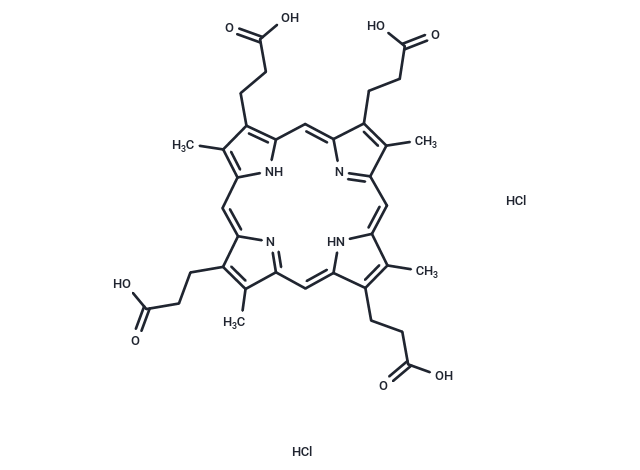Shopping Cart
- Remove All
 Your shopping cart is currently empty
Your shopping cart is currently empty

Coproporphyrin III dihydrochloride, a bioactive compound secreted by nostril- and skin-associated Propionibacterium species, promotes the aggregation of Staphylococcus aureus during early stationary phase growth at a low pH of 4-6. In addition, it facilitates plasma-independent biofilm formation by S. aureus on non-living surfaces. This compound could play a crucial role in mediating the accumulation and biofilm development of S. aureus in nasal passages or other locations where both Propionibacterium and S. aureus coexist.

| Pack Size | Price | Availability | Quantity |
|---|---|---|---|
| 10 mg | Inquiry | 10-14 weeks | |
| 50 mg | Inquiry | 10-14 weeks |
| Description | Coproporphyrin III dihydrochloride, a bioactive compound secreted by nostril- and skin-associated Propionibacterium species, promotes the aggregation of Staphylococcus aureus during early stationary phase growth at a low pH of 4-6. In addition, it facilitates plasma-independent biofilm formation by S. aureus on non-living surfaces. This compound could play a crucial role in mediating the accumulation and biofilm development of S. aureus in nasal passages or other locations where both Propionibacterium and S. aureus coexist. |
| Alias | Zincphyrin dihydrochloride |
| Molecular Weight | 727.63 |
| Formula | C36H40Cl2N4O8 |
| Cas No. | 68938-73-8 |
| Storage | Powder: -20°C for 3 years | In solvent: -80°C for 1 year | Shipping with blue ice. |

Copyright © 2015-2025 TargetMol Chemicals Inc. All Rights Reserved.